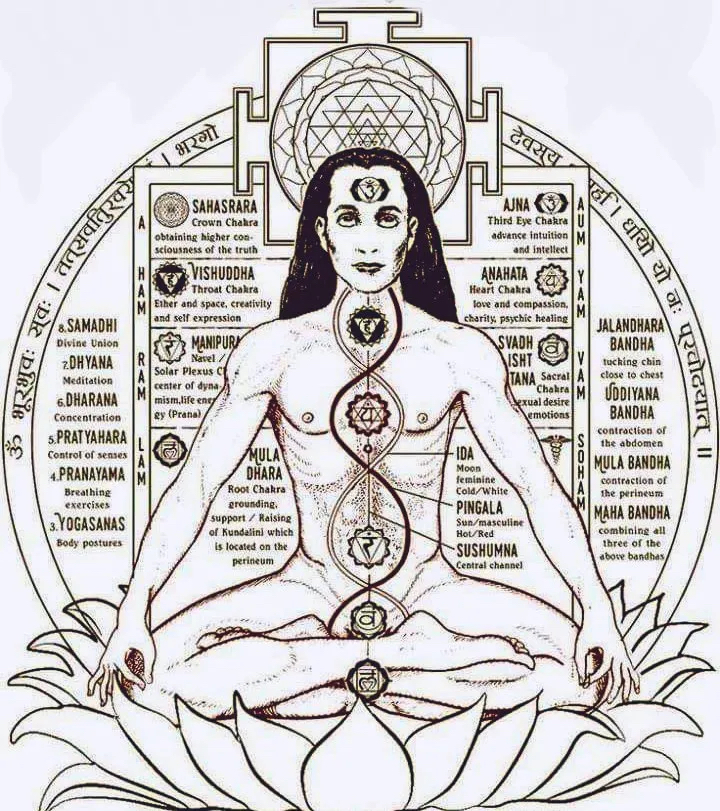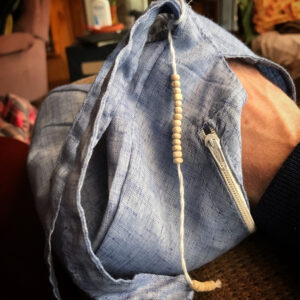 When we sit to meditate, we attempt to still the fluctuations of the mind. Sometimes we do this by placing our attention on an object of meditation, which can be a physical object like a candle flame or murti, or something more subtle, like a mantra or even our own patterns of breathing.
When we sit to meditate, we attempt to still the fluctuations of the mind. Sometimes we do this by placing our attention on an object of meditation, which can be a physical object like a candle flame or murti, or something more subtle, like a mantra or even our own patterns of breathing.
Simply placing our attention on the breath as we inhale and exhale can be a powerful meditation technique. Part of the power of this practice is that it goes beyond “quieting the mind.” As we watch the breath rise and fall, we are actually working with our life’s energy pathways. This is called “pranayama.” Although this term is often translated as “breath work” or “breath control,” attention to the breath is really just the vehicle for direction or influence of the life force energy, prana.
In the West, we tend to think of the “nervous system” as something materially tangible, like the wiring of a house. In India, the emphasis goes beyond the physical structure to the flow of energy itself. It’s as much about the electrical current as it is the wiring.
Our patterns of current or life force energy can be thought of as pathways, roughly corresponding to the structure of our physical nervous system. The representation of these patterns or flows of energy are called the nadis.
What are the Nadis?
Nadi is a Sanskrit word for “channel.” The tributary channels of pranic energy in our system converge in patterns that form three main channels which weave around what we know as the Chakras (our seven major cerebral and spinal energy centers).
In Kriya Yoga practice, much attention is given to the Sushumna Nadi, which is the central, spiritual energy channel that corresponds most closely in location with the spinal cord, and represents the most direct journey of energy between the first chakra and the crown.
For energy to flow effectively through the central channel, the other two channels must also be balanced and free of blocks. These channels are:
1) The Ida Nadi, which flows to the left from the Root Chakra, weaving around the chakras until it terminates in the left nostril. This nadi is considered the left channel, and rules the left (or lunar) side of the body; and,
2) The Pingala Nadi, which flows to the right from the Root, terminating at the right nostril, ruling the right (solar) side of the body.
At the very beginning of nearly every meditation session, I spend some time breathing in a strategic way to clear and open these twin energy channels. This pranayama technique is called Nadi Shodhana. The phrase means “channel clearing” but it is often rendered in English as “alternate nostril breathing” (for reasons that should become obvious as you read the description of the technique). Some traditions call the practice “purifying breaths.”
Nadi Shodhana Technique
Sit quietly and relaxed with your spine straight. Close your eyes and take a few soft, deep breaths.
- Bring your right hand up so that your palm is in front of your mouth. Your index and middle finger will be just in front of your forehead, right above the eyebrows.
- Press your thumb in gently on the right side of your nose, blocking off the passage of air, and inhale through your left nostril. As you inhale, place your attention on the rising of the breath, and the left side of your body.
- Release your thumb from the right nostril, and press the tips of your ring finger and pinky into the left side of your nose to block the passage of air. Exhale, feeling the air moving out through your right nostril, and the sensations on the right side of your body. Pause briefly before inhaling and sensing the breath rise on the right side again.
- Finally, switch sides with your fingers and thumb once more and complete the cycle by exhaling through the left nostril as the breath descends on the left side of your body.
This four-step process of breathing in left, breathing out right, breathing in right, breathing out left is considered one cycle of Nadi Shodhana. Most of the time I will do twelve cycles at the beginning of a meditation session (although for Green Tara Sadhana instructions are specific to do nine purifying breaths at the beginning). The cycles can be counted on your free hand, using the twelve finger bones in that hand as if they were mala beads. Move your thumb to the next bone as you complete a cycle. When you reach the tip of the last finger, you’ve done twelve cycles of Nadi Shodhana.
Benefits of Nadi Shodhana
From an immediate, practical standpoint the practice of alternate nostril breathing as described above brings an almost instant sense of calm and centeredness. Respiration and heart rates decline, anxiety dissipates, cortisol and cytokines are reduced, oxytocin is released. Even five minutes of practice can reduce stress and increase mental focus. Over time, longer or more frequent practice (and incorporating other techniques such as mantra meditation) can quell inflammation, reduce blood pressure, relieve depression, enhance memory and mental clarity, promote optimism, stimulate creativity and generally improve one’s outlook and quality of life.
Beyond the immediate benefits, for the committed yogi, clearing these channels is essential preparation for more intense practices such as Kriya Yoga Pranayama, where the life force is directed to the higher cerebral centers in search of awakening, liberation and consciousness of God.
Resources
Here’s a great, short demonstration of the practice from Banyan Botanicals.
There’s also a good thread on the Nadis from V Shuddhi on Twitter.
My teacher, Ryan, also speaks about alternate nostril breathing in this video about preparing for Kriya Yoga Initiation as he describes the Kriya Meditation that he was taught by his guru, Roy Eugene Davis.
I’d love to hear from you with questions, or your own experiences with Nadi Shodhana and other pranayama practices. Leave a comment below or hit me with an email.

 What Is Japa?
What Is Japa? Nearly every morning I still tune in to
Nearly every morning I still tune in to  “A Very Powerful Prayer”
“A Very Powerful Prayer”


 One of the very first things that I learned to do when I began to change my life was to begin keeping a gratitude journal. This incredibly simple practice can have a profound effect on one’s happiness and well being.
One of the very first things that I learned to do when I began to change my life was to begin keeping a gratitude journal. This incredibly simple practice can have a profound effect on one’s happiness and well being. I was introduced to the Divine Office by a lifelong friend who is a Catholic Priest. From time to time he has come to visit our family for a few days, and he always brings several beautifully bound large volumes with him for his daily prayers. I was fascinated and intrigued by all of the ribbons and the elaborate process involved, but thought of this prayer as a somewhat arcane practice, reserved for the clergy.
I was introduced to the Divine Office by a lifelong friend who is a Catholic Priest. From time to time he has come to visit our family for a few days, and he always brings several beautifully bound large volumes with him for his daily prayers. I was fascinated and intrigued by all of the ribbons and the elaborate process involved, but thought of this prayer as a somewhat arcane practice, reserved for the clergy.